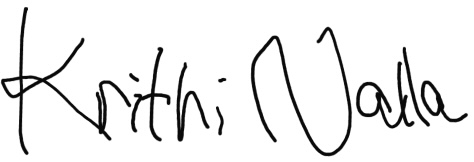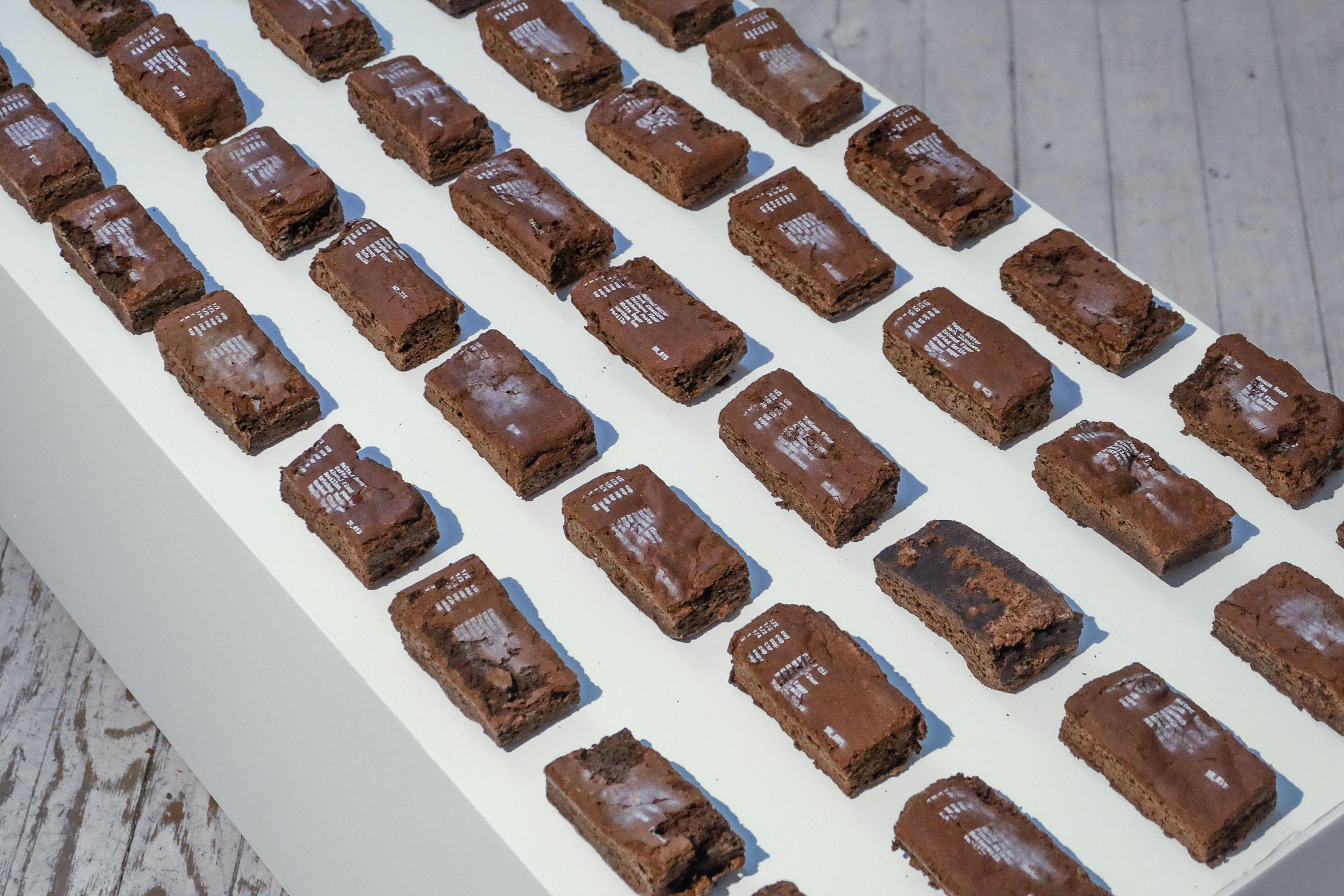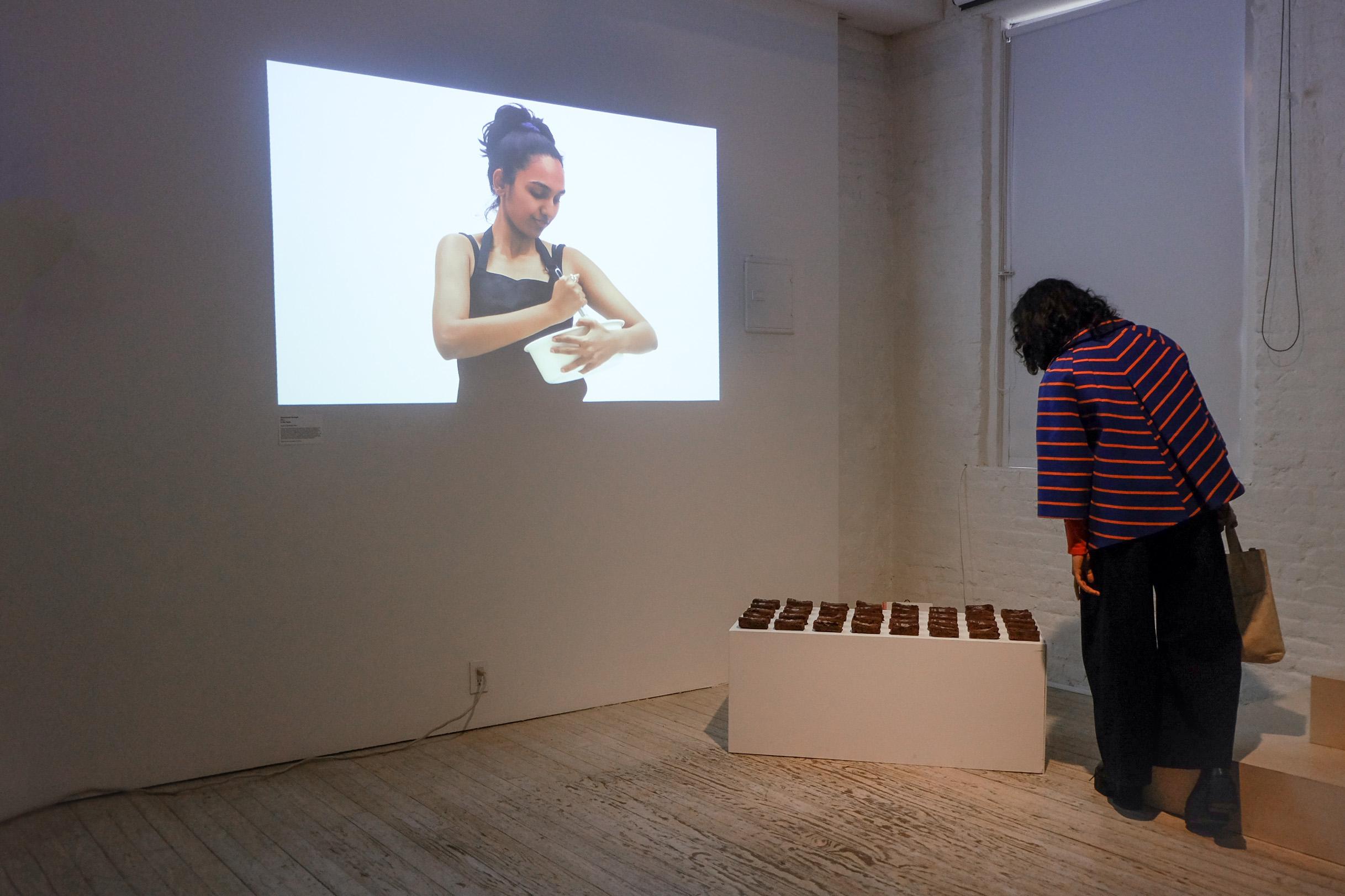Oct 2022 - 1 week

Quantum Brownie(s)
These recipes are generated using IBM q-composer with access to IBM Quantum Computers. The Bernstein–Vazirani quantum algorithm was used to build a system that would create recipes. With the dataset generated by a 3 qubit circuit, a brownie recipe system with over 16.7 million possibilities was created. By embracing the noise of the data and by entertaining ideas of entanglement and superposition, The first ever Quantum Cooking Recipe Collection (2022) is born.
Role
Design Researcher, Critical Thinker, Creative Coding, Film Maker
Awards
2022 Most Creative Use of Quantum Technology, IBM Quantum Team, New York.
Collaborators
Shashwath Santosh
Six Lauture
Design Researcher, Critical Thinker, Creative Coding, Film Maker
Awards
2022 Most Creative Use of Quantum Technology, IBM Quantum Team, New York.
Collaborators
Shashwath Santosh
Six Lauture
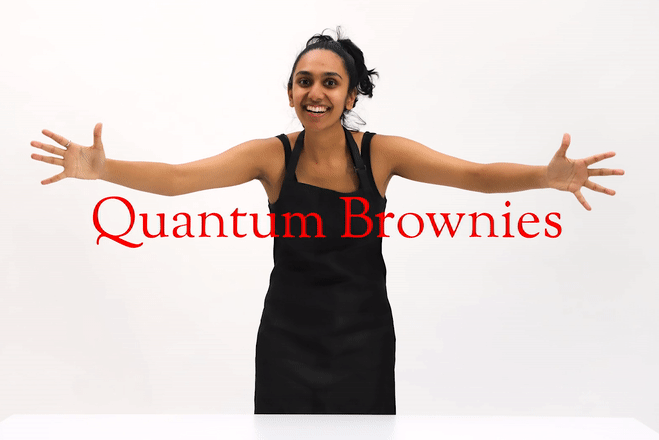
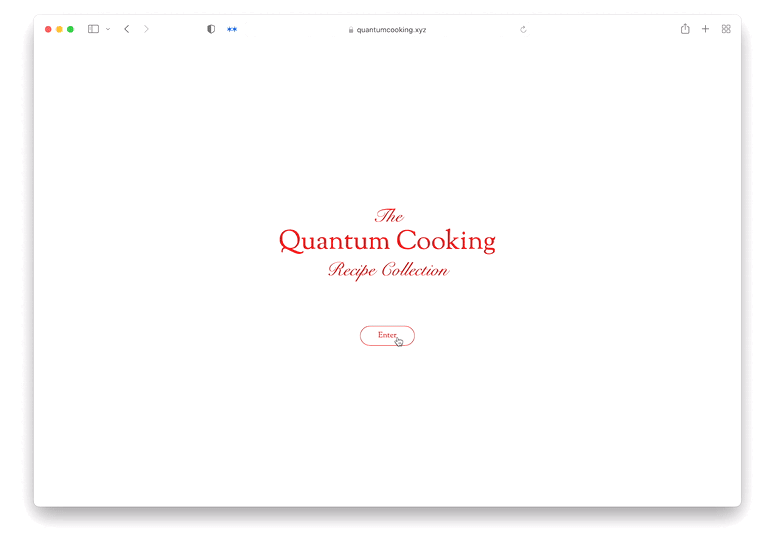
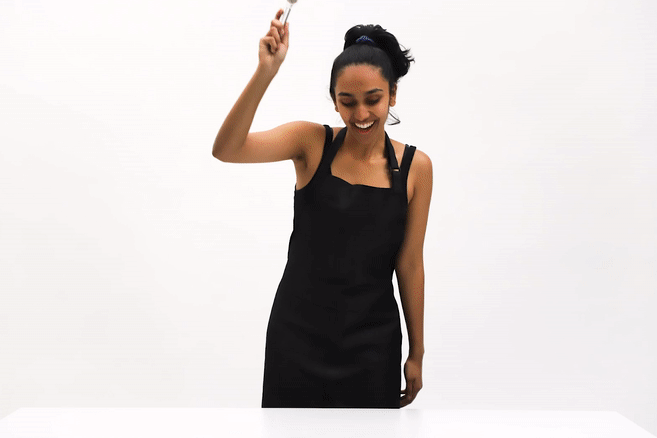


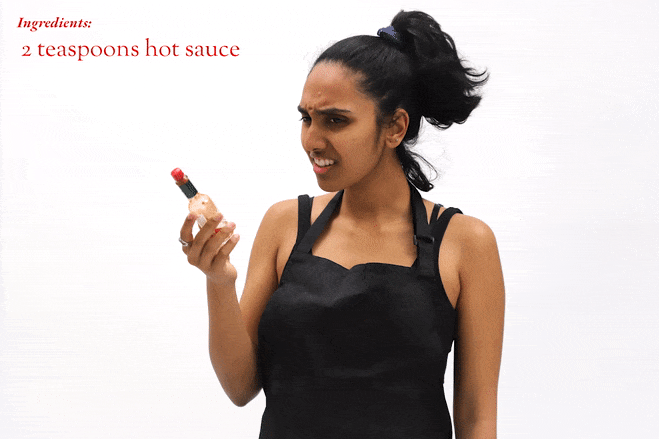
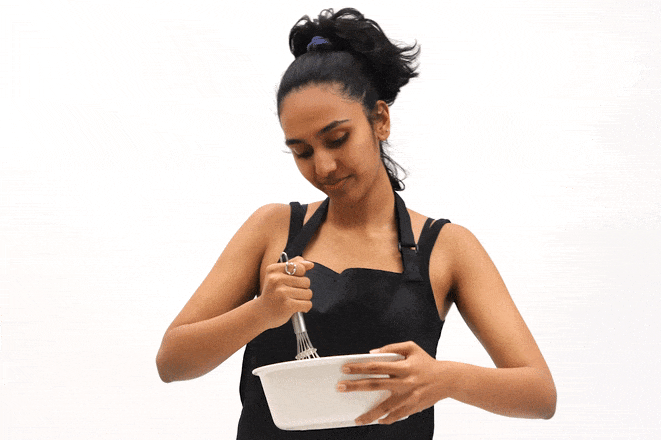
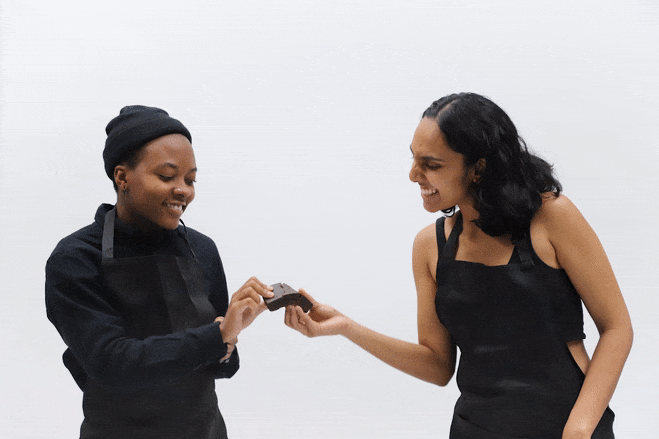
Methods
Quantum computing is a complex system, we brought this technology into the every-day life in the form of a cooking tutorial, and a cookbook.

Quantum Cooking
The simulation of chemical properties of molecules is one of the biggest applications of quantum computation in scientific pursuit today, with use cases ranging from pharmaceutical drug testing to nuclear chemistry. New avenues of research suggesting the simulation of physical properties like smell and taste of molecules are being looked into.
We propose Quantum Cooking as a means of generating truly random recipes that embrace noise, recipes with entangled ingredients to ideally balance out flavors, and simulating the taste of recipes made with ingredients that don’t exist.
What if you could taste the Sun?
What if you could cook with asteroid dust?
Quantum cooking might just let you.
We propose Quantum Cooking as a means of generating truly random recipes that embrace noise, recipes with entangled ingredients to ideally balance out flavors, and simulating the taste of recipes made with ingredients that don’t exist.
What if you could taste the Sun?
What if you could cook with asteroid dust?
Quantum cooking might just let you.

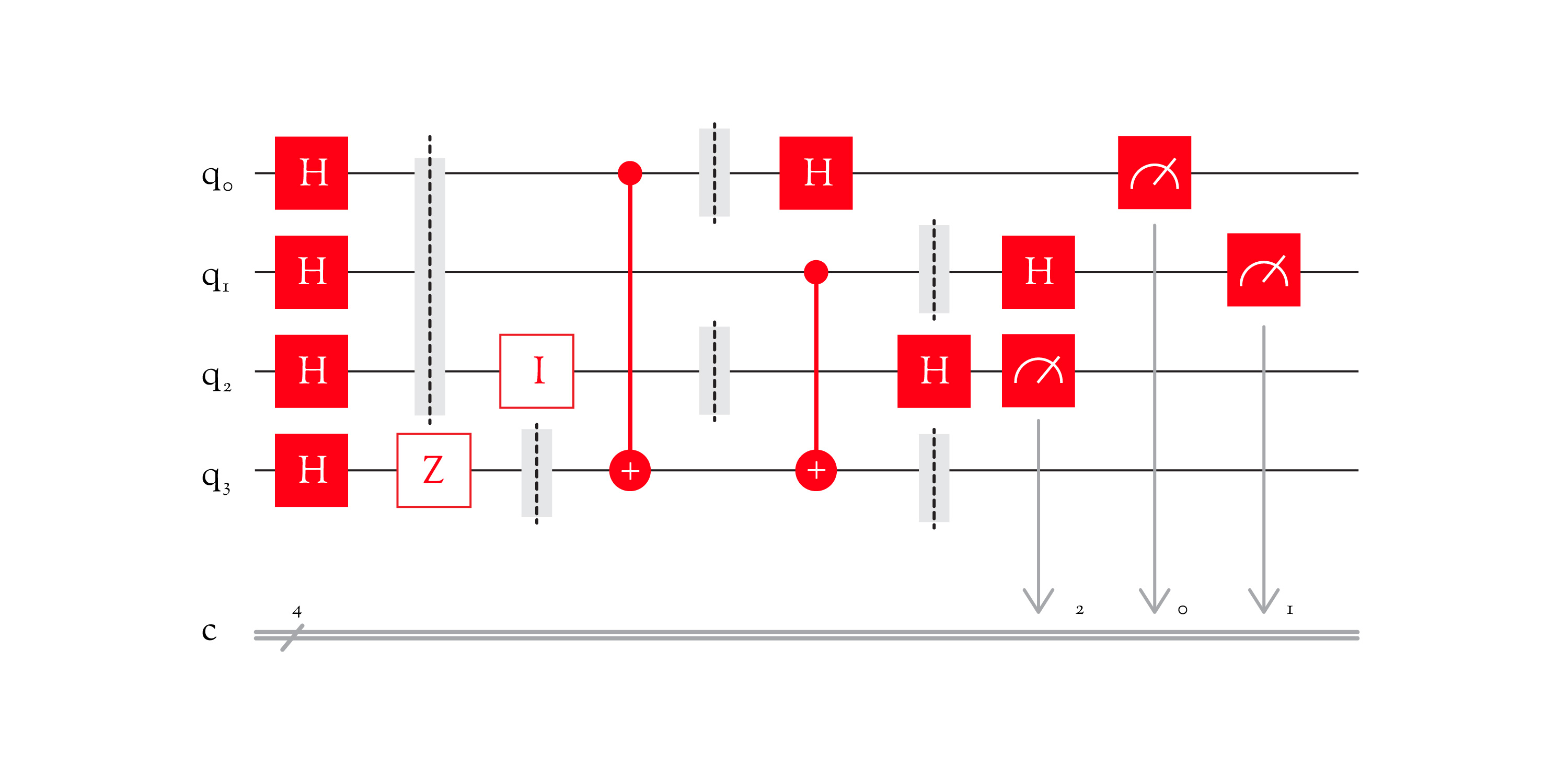
How it works
Using the Bernstein-Vazirani algorithm and a basic 5 step brownie recipe and set the ingredients and cooking time as qubits [variables]. Each of these qubits [variables] could be thought off as broader group. We thought of each of these groups as qubit that held a list of alternate ingredients and cook times within it. We entangled larger bake time values with ingredients that could take longer to cook. The difficulty factor of the recipe was determined by calculating an accessibility score that we assigned to each of the ingredients based on price and location.
All of these functions formed our digital cookbook.
All of these functions formed our digital cookbook.


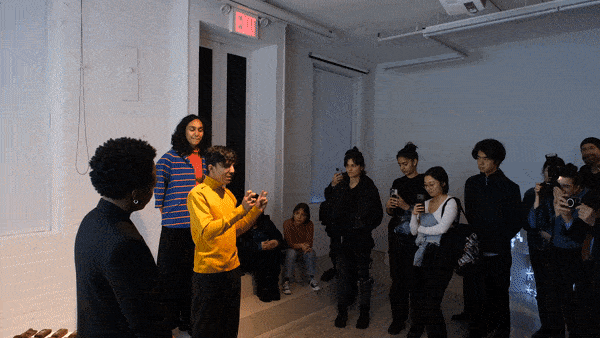



On Display:
1. Microscope Gallery, New York,
March 22 - Mar 31, 2023
2. Sobre Messa, Hold a Space for Me, New York
Nov 18, 2022
Press:
The Art and Design of Quantum Computing︎︎︎, The New School
Special Thanks to:
Russell Huffman, Designer, IBM Quantum
Dr. Paul Kassebaum, Physicist, IBM Quantum
Brian Ingmanson, Education at IBM Quantum
Maya Georgieva, Futurist + Technologist, The New School
Sven Travis, Prof. of Media & Quantum Design, The New School
Chintan Sawla, Web Dev Consultant, QuantumCooking.xyz
Shaina Suri, Event Photography
1. Microscope Gallery, New York,
March 22 - Mar 31, 2023
2. Sobre Messa, Hold a Space for Me, New York
Nov 18, 2022
Press:
The Art and Design of Quantum Computing︎︎︎, The New School
Special Thanks to:
Russell Huffman, Designer, IBM Quantum
Dr. Paul Kassebaum, Physicist, IBM Quantum
Brian Ingmanson, Education at IBM Quantum
Maya Georgieva, Futurist + Technologist, The New School
Sven Travis, Prof. of Media & Quantum Design, The New School
Chintan Sawla, Web Dev Consultant, QuantumCooking.xyz
Shaina Suri, Event Photography
Resources:
Ethan Bernstein and Umesh Vazirani (1997) "Quantum Complexity Theory" SIAM Journal on Computing, Vol. 26, No. 5: 1411-1473, doi:10.1137/S0097539796300921.
Scalable Quantum Simulation of Molecular Energies
P. J. J. O’Malley et al.Phys. Rev. X 6, 031007 – Published 18 July 2016
Digital quantum simulation of molecular dynamics and control
Alicia B. Magann, Matthew D. Grace, Herschel A. Rabitz, and Mohan SarovarPhys. Rev. Research 3, 023165 – Published 1 June 2021
Learning to Smell: Using Deep Learning to Predict the Olfactory Properties of Molecules. October, 2019
“AI Model Links Smell Molecules With Metabolic Processes.” Quanta Magazine, 10 Oct. 2022
Yirka, Bob and Phys.org. Google Conducts Largest Chemical Simulation on a Quantum Computer to Date.
“Google AI Can Tell What Things Smell like by the Molecular Structure.” New Scientist
Ethan Bernstein and Umesh Vazirani (1997) "Quantum Complexity Theory" SIAM Journal on Computing, Vol. 26, No. 5: 1411-1473, doi:10.1137/S0097539796300921.
Scalable Quantum Simulation of Molecular Energies
P. J. J. O’Malley et al.Phys. Rev. X 6, 031007 – Published 18 July 2016
Digital quantum simulation of molecular dynamics and control
Alicia B. Magann, Matthew D. Grace, Herschel A. Rabitz, and Mohan SarovarPhys. Rev. Research 3, 023165 – Published 1 June 2021
Learning to Smell: Using Deep Learning to Predict the Olfactory Properties of Molecules. October, 2019
“AI Model Links Smell Molecules With Metabolic Processes.” Quanta Magazine, 10 Oct. 2022
Yirka, Bob and Phys.org. Google Conducts Largest Chemical Simulation on a Quantum Computer to Date.
“Google AI Can Tell What Things Smell like by the Molecular Structure.” New Scientist

